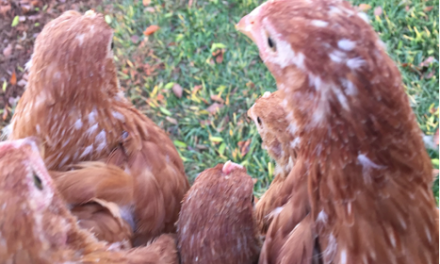Expanding your family’s flock? Chickens make lovely additions to rural and urban homesteads. Now that you know how easy it is to raise chickens, you are ready to head over to Buchheit and select more chicks or maybe add ducks or turkeys.

Let talk about the nature of a flock of chickens. They are just that, a flock. They do not function independently. In the wild, they were a prey animal, so they survived because they learned to operate as a unit. I used to think it was horrible when I came upon a flock that had pecked to death a sick chicken until I did more research and realized that since chickens act as a flock or unit, they will remove any internal threat to the health and safety of the whole flock. They are wired to kill a sick or weak hen before it can infect the entire group. It’s not pretty, but as you gain an understanding of flock dynamics, you can appreciate their “for the greater good” ideals.

The pecking order is an ingenious way that chickens use to keep peace and harmony in the chicken house. It is the social hierarchy that occurs in a flock of chickens and dictates such issues as who eats first and who roosts on the highest perch. Once the pecking order is established, fighting is kept down to a minimum and usually involves challenges to the top cock. The order develops on three levels: all the cocks, all the hens and (when you have a flock mixed with several breeds) between the cocks and hens. An aggressive Rhode Island Red hen may be higher in the order than a juvenile rooster for example. Within flocks with different comb styles, the single combs are commonly more elevated in rank than those with other comb styles.

The pecking order is designed so that, once established, everyone knows where they belong, and they will stay in that position. A stable pecking order reduces stress and tensions within a flock. You can help maintain a calm environment in your coop by using some of the following suggestions.
Here are the newest members of my flock that has been successfully integrated into my larger flock, but they still act as their sub-group within the flock.

Make introducing new chicks into the existing flock a once-a-year event. Avoid doing it often as it causes a reshuffling of the pecking order. Constantly upsetting the pecking order by adding new chickens can lead to cannibalism. Therefore, it is essential to follow some simple steps when adding new chicks. If chickens keep fussing with each other, look for management issues such as poor nutrition, insufficient air-flow in the heat of summer or inadequate floor space per bird.
Most chicken experts agree that you should refrain from blending two flocks or adding just a couple birds until the younger birds are almost as large as the existing hens. When introducing new birds, reduce bright lighting to make the unfamiliar chickens less conspicuous. If you can, place birds to be introduced in a cage that you can then place in the larger coop so that the flock can get used to the new girls. No need to try to add the new chicks at night as it’s more important that you are around to monitor the success of the blending. I like to try adding the new girls first thing in the morning. I can stay in the area to make sure the flock does not draw blood and injure the new girls. Sometimes, it takes a few days to get the flock to accept the new chicks, but if you are patient, usually the combination will be successful.
Be blessed! Anne May






